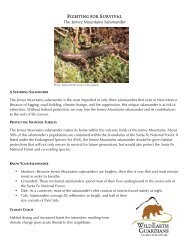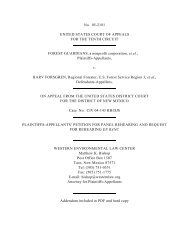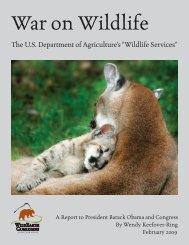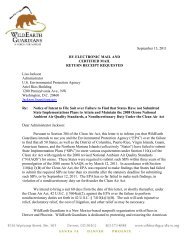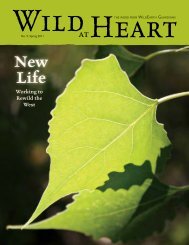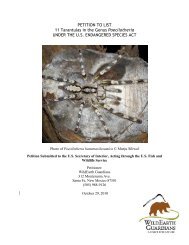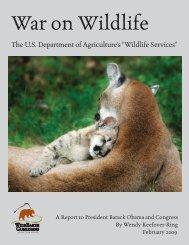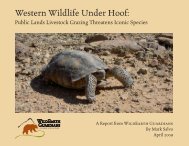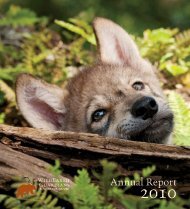PETITION TO LIST THE JEMEZ MOUNTAINS SALAMANDER ...
PETITION TO LIST THE JEMEZ MOUNTAINS SALAMANDER ...
PETITION TO LIST THE JEMEZ MOUNTAINS SALAMANDER ...
Create successful ePaper yourself
Turn your PDF publications into a flip-book with our unique Google optimized e-Paper software.
WildEarth Guardians Petition to List<br />
Jemez Mountains Salamander Under the ESA<br />
41<br />
Lack of protection from habitat degradation<br />
Any activities which remove forest canopy, disrupt rock structure and/or decrease surface<br />
humidity within Jemez Mountains salamander habitat threaten the persistence of this<br />
species. Such activities include salvage operations and thinning treatments and are<br />
considered Category 1 activities by the CMP (NMEST 2000b). The CMP set up<br />
guidelines that require any Category 1 activities to be coordinated with the NMEST, as<br />
the team is composed of experts in the field of salamander biology and ecology.<br />
However, there are no federal or state policies which require NMEST recommendations<br />
to be enforced. Although the USFS requested comments from the NMEST regarding<br />
proposed salvage/thinning operations, NMEST-recommended alternatives and mitigation<br />
measures were only occasionally or partially implemented. Neither the CMP nor<br />
NMEST recommendations can be enforced by law (Armijo 2004). The following are<br />
examples of how the USFS disregarded the CMP and/or recommendation of the NMEST.<br />
Dome Fire (1996)<br />
The Dome Fire Salvage Sale biological evaluation (Dome Fire BE) proposed removal of<br />
snags and collection of firewood in high and moderately burned areas in approximately<br />
1,350 acres of Jemez Mountains salamander habitat, even though the SFNF Plan stated<br />
that the priority for this area was wildlife protection (Figures 4, 6 and 7) (NMEST 1994;<br />
USFS 1996c; NMEST 2000b). The effect determination was that the “proposed actions<br />
may impact individual Jemez Mountains salamanders, but is [sic] not likely to result in a<br />
trend toward federal listing or loss in viability.” This decision was made after the<br />
NMEST received maps of potential salvage units and snag data tables and met with<br />
representatives of the NMEST to discuss the preliminary proposed actions. The decision<br />
by the USFS was not subject to administrative appeals due to a 1995 law which<br />
prohibited appeals to timber sales with the Forest Service (Easthouse 1996; Santa Fe New<br />
Mexican 1996).<br />
In October of 1996 the NMEST and the NMNHP communicated strong concerns that this<br />
timber sale would negatively impact populations of the Jemez Mountains salamander and<br />
degrade its habitat (Allen 1996; NMEST 1996; NMNHP 1996; Wilson 1996). The<br />
NMNHP (1996) stated,<br />
The Jemez Mountains salamander is endemic to the Jemez Mountains, so<br />
its viability over the long term is principally the responsibility of the Santa<br />
Fe National Forest. Therefore, particular attention should be paid to the<br />
cumulative effects of this and other resource management projects in these<br />
mountains. Cumulative effects should be thoroughly addressed. A few<br />
units or parts of units targeted for salvage or fuelwood removal apparently<br />
were not surveyed in 1996 or earlier. They must be surveyed prior to<br />
proposed actions. The salamander is highly sensitive to drying and<br />
depends on woody debris and rocks for adequate moisture. Therefore,<br />
removal of snags can significantly impact this species, which is difficult to



